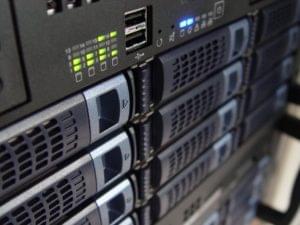In the previous article we discussed the primary differences between SQL and NoSQL databases. In this follow-up, we’ll apply our knowledge to specific scenarios and determine the best option. To recap: SQL databases:
- store related data in tables
- require a schema which defines tables prior to use
- encourage normalization to reduce data redundancy
- support table JOINs to retrieve related data from multiple tables in a single command
- implement data integrity rules
- provide transactions to guarantee two or more updates succeed or fail as an atomic unit
- can be scaled (with some effort)
- use a powerful declarative language for querying
- offer plenty of support, expertise and tools.
- store related data in JSON-like, name-value documents
- can store data without specifying a schema
- must usually be denormalized so information about an item is contained in a single document
- should not require JOINs (presuming denormalized documents are used)
- permit any data to be saved anywhere at anytime without verification
- guarantee updates to a single document — but not multiple documents
- provide excellent performance and scalability
- use JSON data objects for querying
- are a newer, exciting technology.
- SQL is digital. It works best for clearly defined, discrete items with exact specifications. Typical use cases are online stores and banking systems.
- NoSQL is analog. It works best for organic data with fluid requirements. Typical use cases are social networks, customer management and web analytics systems.
Scenario One: a Contact List
Let’s re-invent the wheel and implement an SQL-based address book system. Our initial naivecontact table is defined with the following fields:
- id
- title
- firstname
- lastname
- gender
- telephone
- address1
- address2
- address3
- city
- region
- zipcode
- country
telephone table so contacts can have as many as they like. This also normalizes our data — we don’t need a NULL for contacts without a number:
- contact_id
- name (text such as land-line, work mobile, etc.)
- number
email table:
- contact_id
- name (text such as home email, work email, etc.)
- address
address table:
- contact_id
- name (text such as home, office, etc.)
- address1
- address2
- address3
- city
- region
- zipcode
- country
contact table has been reduced to:
- id
- title
- firstname
- lastname
- gender
otherdata table with name-value pairs to cope.
The data is fragmented
It’s not easy to for developers or system administrators to examine the database. The program logic will also become slower and more complex, because it’s not practical to retrieve a contact’s data in a single SELECT statement with multiple JOIN clauses. (You could, but the result would contain every combination of telephone, email and address: if someone had three telephone numbers, five emails and two addresses, the SQL query would generate thirty results.)
Finally, full-text search is difficult. If someone enters the string “SitePoint”, we must check all four tables to see if it’s part of a contact name, telephone, email or address and rank the result accordingly. If you’ve ever used WordPress’s search, you’ll understand how frustrating that can be.
The NoSQL Alternative
Our contact data concerns people. They are unpredictable and have differing requirements at different times. The contact list would benefit from using a NoSQL database, which stores all data about an individual in a single document in thecontacts collection:
{
name: [
"Billy", "Bob", "Jones"
],
company: "Fake Goods Corp",
jobtitle: "Vice President of Data Management",
telephone: {
home: "0123456789",
mobile: "9876543210",
work: "2244668800"
},
email: {
personal: "bob@myhomeemail.net",
work: "bob@myworkemail.com"
},
address: {
home: {
line1: "10 Non-Existent Street",
city: "Nowhere",
country: "Australia"
}
},
birthdate: ISODate("1980-01-01T00:00:00.000Z"),
twitter: '@bobsfakeaccount',
note: "Don't trust this guy",
weight: "200lb",
photo: "52e86ad749e0b817d25c8892.jpg"
}contact text fields using:
db.contact.createIndex({ "$**": "text" });db.contact.find({
$text: { $search: "something" }
});Scenario Two: a Social Network
A social network may use similar contact data stores, but it expands on the feature set with options such as relationship links, status updates, messaging and “likes”. These facilities may be implemented and be dropped in response to user demand — it’s impossible to predict how they will evolve. In addition:- Most data updates have a single point of origin: the user. It’s unlikely we’ll need to update two or more records at any one time, so transaction-like functionality is not required.
- Despite what some users may think, a failed status update is unlikely to cause a global meltdown or financial loss. The application’s interface and performance take a higher priority than robust data integrity.
status collection:
{
user_id: ObjectID("65f82bda42e7b8c76f5c1969"),
update: [
{
date: ISODate("2015-09-18T10:02:47.620Z"),
text: "feeling more positive today"
},
{
date: ISODate("2015-09-17T13:14:20.789Z"),
text: "spending far too much time here"
}
{
date: ISODate("2015-09-17T12:33:02.132Z"),
text: "considering my life choices"
}
]
}update array. Unlike an SQL store, there’s no need to set previous message emoticons to NULL — our program logic can show a default or no image if an emoticon isn’t set.
Scenario Three: a Warehouse Management System
Consider a system which monitors warehoused goods. We need to record:- products arriving at the warehouse and being allocated to a specific location/bay
- movements of goods within the warehouse, e.g. rearranging stock so the same products are in adjacent locations
- orders and the subsequent removal of products from the warehouse for delivery.
- Generic product information such as box quantities, dimensions and color can be stored, but it’s discrete data we can identify and apply to anything. We’re unlikely to be concerned with specifics, such as laptop processor speed or estimated smartphone battery life.
- It’s imperative to minimize mistakes. We can’t have products disappearing or being moved to a location where different products are already being stored.
- In its simplest form, we’re recording the transfer of items from one physical area to another — or removing from location A and placing in location B. That’s two updates for the same action.
Expose Yourself!
I hope these scenarios help, but every project is different and, ultimately, you need to make your own decision. (Although, we developers are adept at justifying our technological choices, regardless of how good they are!) The best advice: expose yourself to as many technologies as possible. That knowledge will allow you to make a reasoned and emotionally impartial judgment regarding SQL or NoSQL. Best of luck.Frequently Asked Questions (FAQs) about SQL vs NoSQL
What are the key differences between SQL and NoSQL databases?
SQL and NoSQL databases differ in several ways. SQL databases are relational, meaning they organize data in tables and rows. They use structured query language (SQL) for defining and manipulating the data. On the other hand, NoSQL databases are non-relational and can store data in several ways: document-based, column-based, graph-based or key-value pairs. They are particularly useful for working with large sets of distributed data.
When should I use SQL over NoSQL?
SQL databases are a good choice when you have a clear schema and the data integrity is of utmost importance. They are also beneficial when you need to perform complex queries. SQL databases are ACID compliant ensuring reliable transactions.
When is NoSQL a better choice than SQL?
NoSQL databases are a better choice when you need to store large volumes of data or when the data structure is unclear or changing over time. They provide flexibility, scalability, and speed, making them a good choice for real-time applications and big data.
Can SQL and NoSQL coexist in the same project?
Yes, SQL and NoSQL can coexist in the same project. This is known as a polyglot persistence architecture. The choice of database depends on the specific requirements of each part of your application.
What are some popular SQL and NoSQL databases?
Popular SQL databases include MySQL, Oracle, and PostgreSQL. Popular NoSQL databases include MongoDB, Cassandra, and Redis.
How does data modeling differ between SQL and NoSQL?
In SQL databases, data is typically modeled using a structured, schema-based approach with tables and relationships. In NoSQL databases, data modeling can be done in various ways depending on the type of NoSQL database: document, key-value, columnar, or graph.
How do SQL and NoSQL handle scalability?
SQL databases typically scale vertically by adding more powerful hardware, while NoSQL databases scale horizontally by adding more servers to handle more traffic.
What is CAP theorem and how does it apply to SQL and NoSQL?
CAP theorem states that it’s impossible for a distributed data store to simultaneously provide more than two out of the following three guarantees: Consistency, Availability, and Partition tolerance. SQL databases prioritize consistency and availability, while NoSQL databases prioritize availability and partition tolerance.
How do SQL and NoSQL handle transactions?
SQL databases use ACID (Atomicity, Consistency, Isolation, Durability) properties for transactions. NoSQL databases, on the other hand, do not typically provide all ACID properties. Instead, they focus on the BASE (Basically Available, Soft state, Eventually consistent) model.
What are some use cases for SQL and NoSQL?
SQL databases are ideal for applications requiring multi-row transactions like accounting systems or systems that require complex queries. NoSQL databases are ideal for applications needing to handle large amounts of data and scale horizontally like content management systems, real-time analytics, and IoT applications.
Craig is a freelance UK web consultant who built his first page for IE2.0 in 1995. Since that time he's been advocating standards, accessibility, and best-practice HTML5 techniques. He's created enterprise specifications, websites and online applications for companies and organisations including the UK Parliament, the European Parliament, the Department of Energy & Climate Change, Microsoft, and more. He's written more than 1,000 articles for SitePoint and you can find him @craigbuckler.


